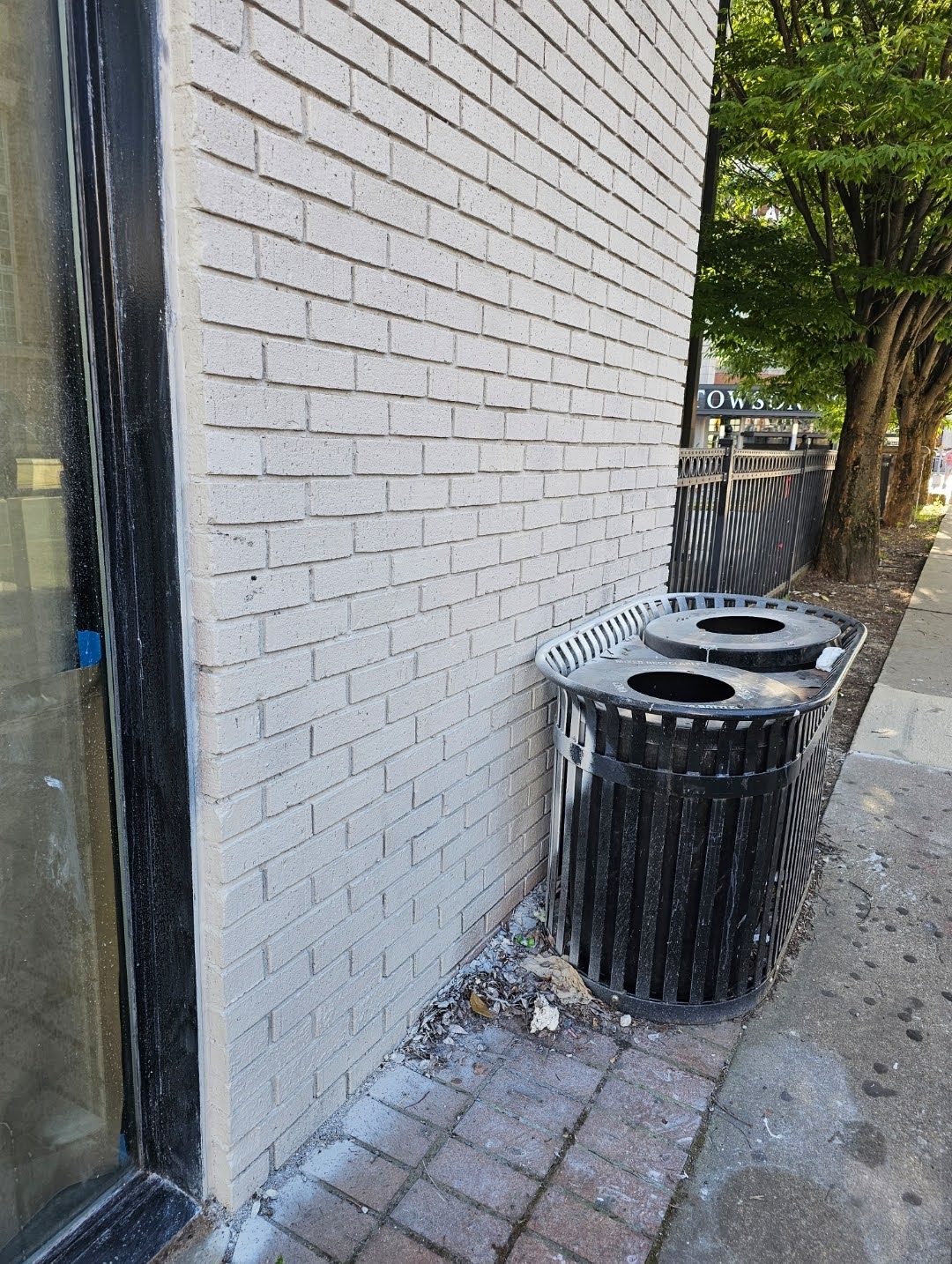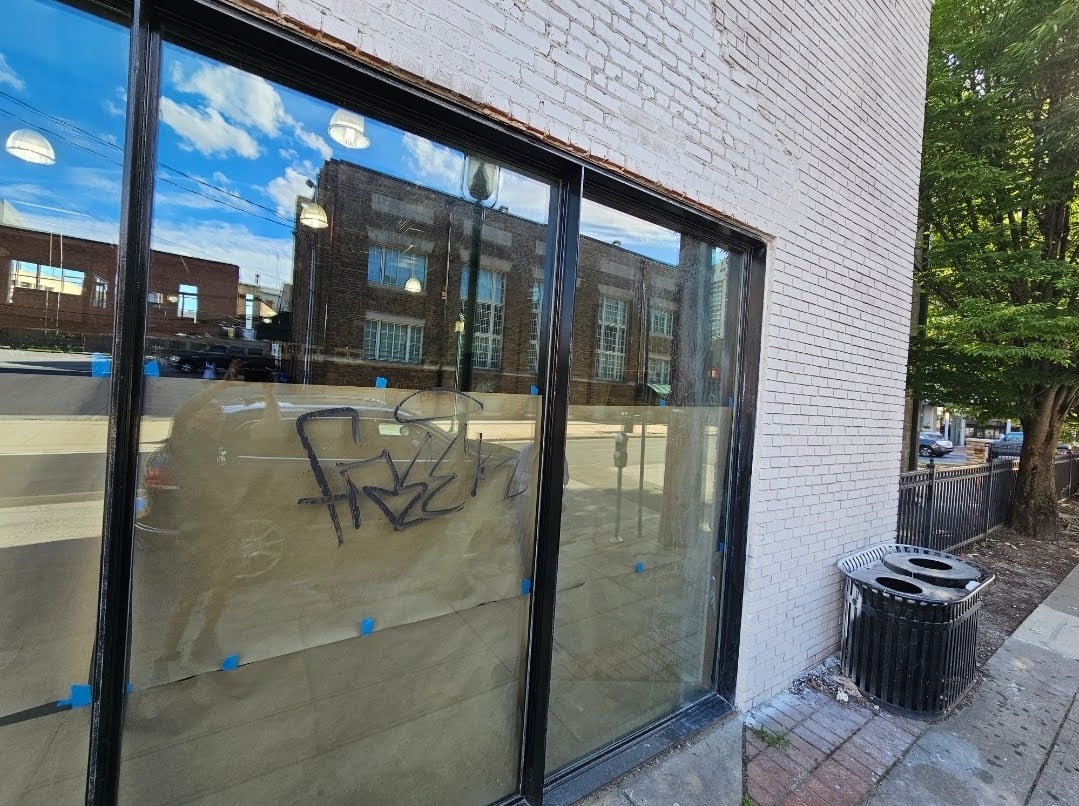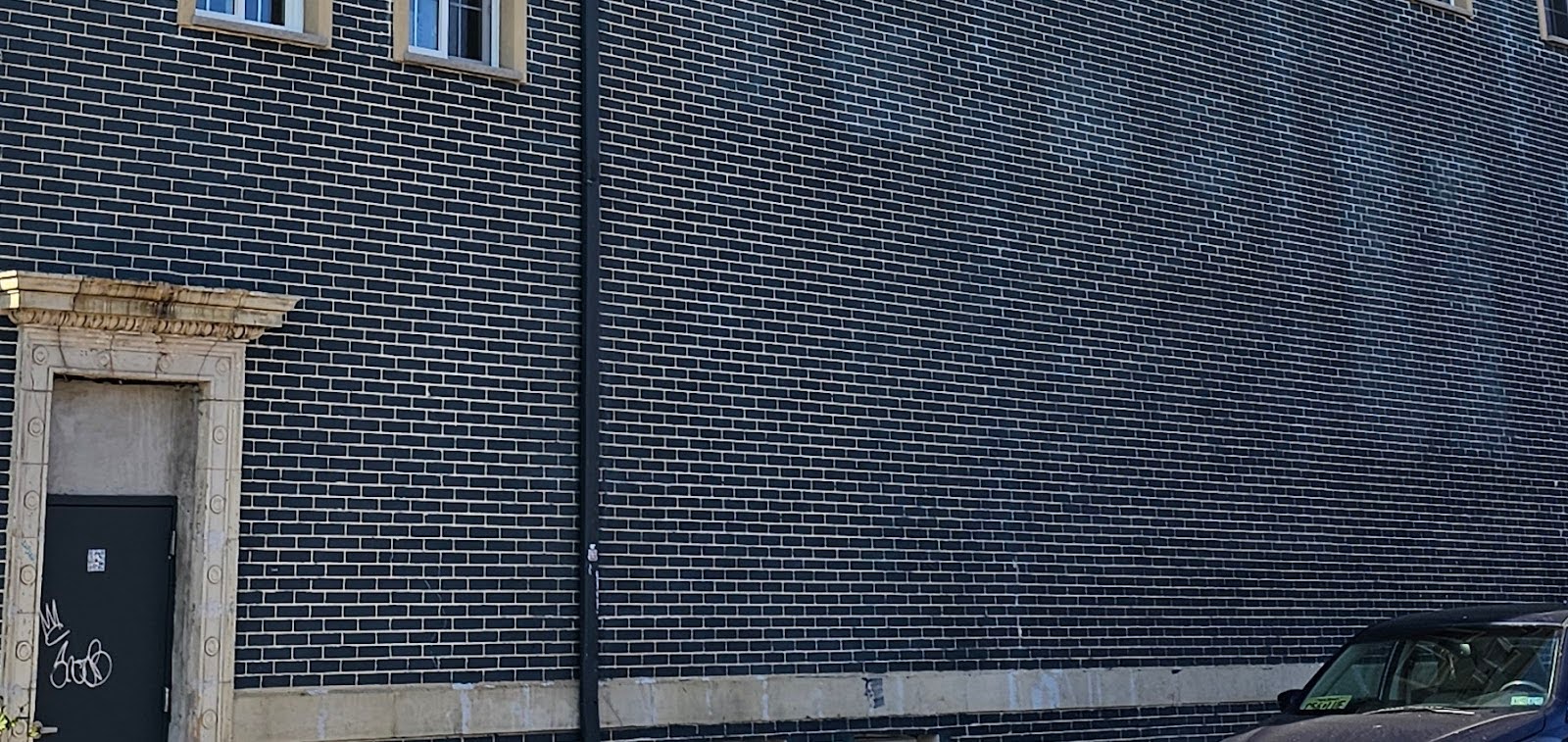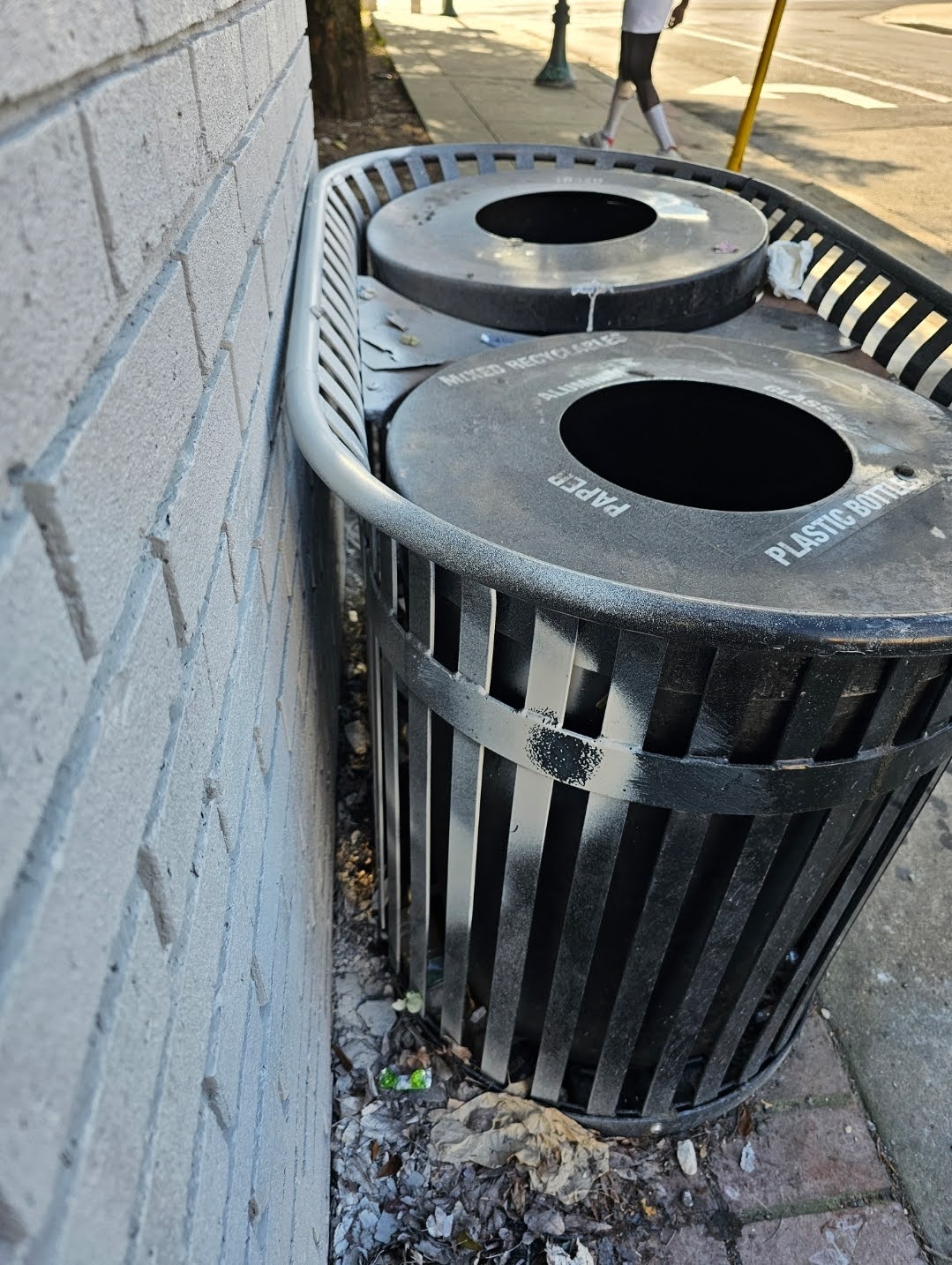Painted Brick Facade Masking and Overspray
A while back, we took a look at an area under construction by the other contractors. We noticed that some of their work just didn’t look right. The painting itself looked ok, at a glance, but the painters didn’t protect any of the stuff around the facade they were actually painting. They got their paint all over the place.
Normally, we talk about masonry and historic pointing and repointing or refurbishment of historic masonry buildings. Today, we’re talking about a masonry building facade, but the real point of the discussion has more to do with the painting than anything else. It’s important to start out by explaining and understanding that masonry doesn’t really need to be painted. The paint itself doesn’t help. It might make it look much better.
That’s an aesthetic issue though. From a strictly functional perspective, paint doesn’t actually protect masonry. If we were talking about a masonry foundation, we might say that there are fluid applied coatings that can significantly help from a waterproofing perspective, but that’s different because that conversation would be about fluid applied coatings which are often confused with paint, but not really the same.
The particular painted wall looks pretty good. This is an example of work in process. There’s still other elements or details of this that need to be completed. Nonetheless, you can see that the brick itself doesn’t look bad. Particularly, this brick has a raked mortar joint.
That raked mortar joint leaves a distinct shadow at the joint between the bricks. That shadow makes the masonry nature of the wall stand out. When a brick wall is built with a flush joint, once the colors of the brick and mortar are hidden by paint, it looks a lot different. It almost makes the masonry nature of the wall disappear a bit. Here though, The raked joints, particularly, make the masonry stand out because you can clearly see every single brick, well-defined.

Although our company has the ability to paint and paint well, professionally, it isn’t necessarily a primary focus. When we see other people take on painting jobs and skip obvious steps, it stands out to us. A better way to do work like this is to apply masking. The application of temporary coverings and masking can be laborious and time-consuming. In fact when using a spray application like this, it can take more time and labor to apply protective coverings than to apply the paint itself.
Nonetheless, the cost of the additional labor for protection generally pays off multiplicatively. In most cases, when painting masonry for the first time, at least two coats of paint will be applied. The first coat may be a primer. In some cases primers can even be mixed with a colorant to match or be similar to the final coats. Then the final coats require less paint to achieve the intended final color. In most cases, when the first coat of paint is applied, it may cover moderately well, but it generally doesn’t cover completely.
In some cases after the first coats are applied you can still see the substrate through the first coat of paint. This condition or characteristic comes up more when the color of the paint is significantly different than the color of the substrate brick or masonry. In this case, they used a white paint. If the substrate is a red clay brick, the color may still be partially visible even after the first coat is applied. By the time the second and or even third coat is applied the substrate might be completely unrecognizable through the paint.

In our next blog article this coming week we’ll talk more about the steps and process of painting masonry and we will discuss some of the techniques he used in masking.
Our company, Dupont Tuckpointing and Masonry, specializes in masonry restoration, historic brick repointing, and tuckpointing services in the Washington D.C. area. These buildings are uniquely historic, and their preservation requires skilled masons who are technically trained in the best practices and knowledge of proper restoration techniques.
We understand the significance of maintaining the architectural integrity of these historic structures, and our team of experienced professionals is dedicated to delivering exceptional craftsmanship. Whether you require masonry restoration, tuckpointing, or brick repointing services, we are here to help.
At Dupont Tuckpointing and Masonry, we take pride in our work and strive to ensure that every project is executed with the utmost care and attention to detail. We are committed to preserving the rich heritage of Washington D.C.’s built environment for generations to come.
If you have any questions or needs regarding masonry restoration, historic brick repointing, or tuckpointing services, please do not hesitate to reach out to us. We would be delighted to assist you and provide you with the expertise and quality workmanship that your historic property deserves.
You can reach us by telephone at (202) 796-7644 and you can reach us by email from the contact form on our website at https://duponttuckpointingmasonrydc.com/contact-us/.



